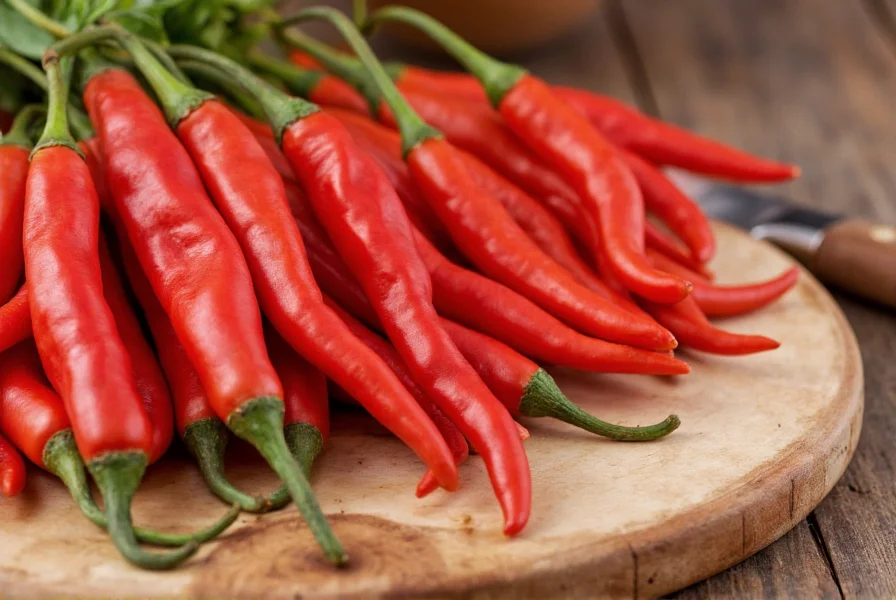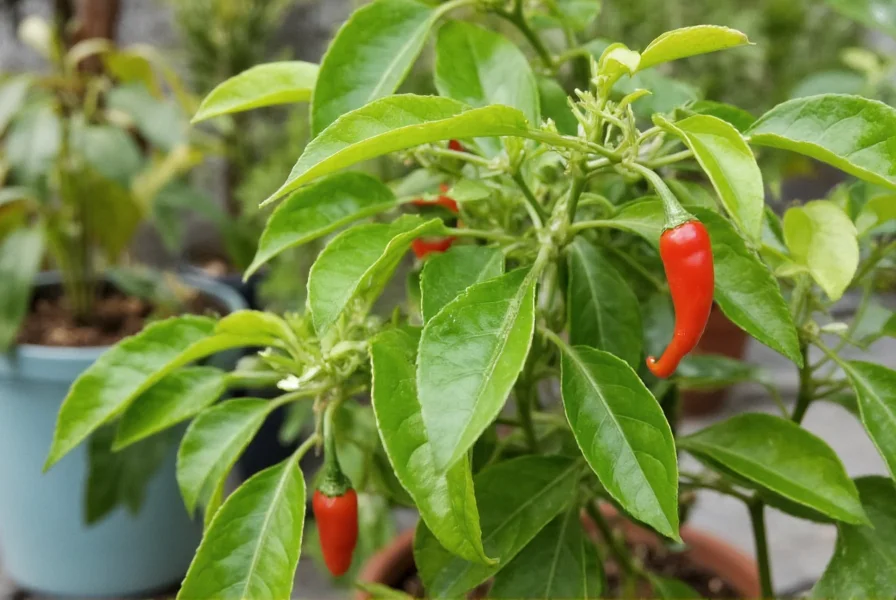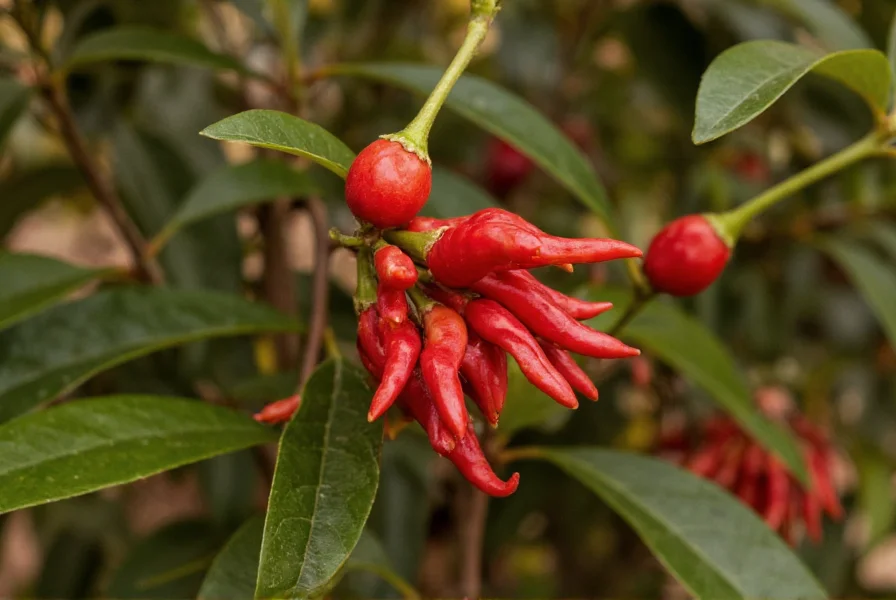Bird chili, scientifically classified as Capsicum frutescens, represents one of the most potent small chili varieties used globally in culinary applications. These slender peppers earned their "bird" designation because birds naturally disperse their seeds without being affected by the capsaicin that makes these chilies so fiery to humans. Understanding bird chili characteristics helps home cooks and professional chefs alike harness their unique properties effectively.
Understanding Bird Chili Characteristics
The distinctive features of bird chilies set them apart from other chili varieties. Their small size belies their significant heat impact, making them a favorite among spice enthusiasts seeking authentic Southeast Asian flavors. When selecting bird chilies at the market, look for firm, glossy specimens without wrinkles or soft spots, which indicate aging and reduced potency.
| Characteristic | Description | Comparison to Other Chilies |
|---|---|---|
| Size | 1-2 inches long, pencil-thin | Smaller than jalapeños (2-3 inches) |
| Heat Level | 50,000-100,000 Scoville units | 6-10x hotter than jalapeños (2,500-8,000) |
| Flavor Profile | Sharp heat with citrusy, slightly sweet undertones | More complex than cayenne's straightforward heat |
| Color Variations | Green (unripe), red, yellow, purple (ripe) | More color variety than serrano peppers |
Regional Varieties and Names
Bird chili goes by numerous names depending on the region, creating potential confusion for cooks seeking authentic ingredients. In Thailand, they're called prik kee noo (mouse droppings chili) due to their small size. Vietnamese cooks refer to them as chốt hành tinh, while Indonesians know them as cabai rawit. The African bird's eye chili represents a distinct but related variety commonly used in African cuisine.
When exploring bird chili varieties, note that Thai bird chilies typically have a slightly fruitier flavor than their African counterparts, which tend to be more straightforwardly hot. The heat level can also vary significantly based on growing conditions—chilies grown in hotter, drier climates generally develop higher capsaicin levels.
Culinary Applications of Bird Chili
Professional chefs and home cooks use bird chilies to add authentic heat to numerous dishes without overwhelming other flavors. Their intense potency means you need fewer peppers to achieve significant heat, making them economical despite their small size. For traditional Thai dishes like tom yum soup or pad krapow, bird chilies provide the characteristic fiery kick that defines these recipes.
When working with bird chilies, consider these culinary tips:
- Remove seeds and membranes for slightly less heat while retaining flavor
- Add early in cooking for infused heat, or later for brighter, sharper spice
- Use whole peppers in soups and stews, removing before serving
- Finely chop for sambals, relishes, and dipping sauces
- Infuse in oil for versatile spicy cooking base

Substitution Options for Bird Chili
When authentic bird chilies aren't available, understanding appropriate substitutions becomes essential for maintaining recipe integrity. The best substitutes depend on whether you prioritize matching the heat level, flavor profile, or both.
For Southeast Asian recipes requiring bird chilies, serrano peppers offer the closest approximation in heat (though slightly less intense at 10,000-23,000 Scoville units). Use one serrano for every two bird chilies. For more authentic flavor, combine serranos with a small amount of cayenne pepper to approximate the fruitiness of bird chilies.
Those seeking milder alternatives might consider jalapeños, but should use approximately three times the quantity to approach bird chili heat levels. Remember that flavor profiles differ significantly, so substitutions will alter the final dish's character.
Growing Bird Chili Plants
Gardeners can successfully grow bird chili plants with proper care, yielding abundant harvests of these potent peppers. These tropical plants thrive in warm conditions with plenty of sunlight. Start seeds indoors 8-10 weeks before the last frost, then transplant outdoors when temperatures consistently exceed 70°F (21°C).
Bird chili plants typically reach 18-24 inches in height and produce numerous small peppers throughout the growing season. For optimal production:
- Provide 6-8 hours of direct sunlight daily
- Maintain consistent moisture without waterlogging soil
- Use well-draining potting mix with added compost
- Fertilize monthly with balanced organic fertilizer
- Harvest peppers when fully colored for maximum heat

Safety and Handling Considerations
Working with bird chilies requires proper handling techniques to avoid discomfort from capsaicin exposure. Always wear gloves when preparing large quantities, and never touch your face or eyes after handling these potent peppers. If accidental contact occurs, use milk or yogurt to neutralize the burning sensation rather than water, which spreads the capsaicin oil.
When cooking with bird chilies, start with less than you think you need—you can always add more heat but cannot remove it once incorporated. For those sensitive to spice, remove seeds and inner membranes where most capsaicin concentrates. Keep dairy products like yogurt or coconut milk nearby when serving dishes with bird chilies, as these effectively counteract the burning sensation.
Frequently Asked Questions
How hot are bird chilies compared to other common peppers?
Bird chilies measure 50,000-100,000 Scoville Heat Units (SHU), making them significantly hotter than jalapeños (2,500-8,000 SHU) and about twice as hot as serrano peppers (10,000-23,000 SHU). They're milder than habaneros (100,000-350,000 SHU) but deliver more intense heat than most commonly available supermarket peppers.
Can I grow bird chili plants indoors successfully?
Yes, bird chili plants can thrive indoors with proper conditions. They require at least 6 hours of direct sunlight or equivalent grow light exposure, temperatures between 70-85°F (21-29°C), and consistent moisture. Use a well-draining potting mix in containers with drainage holes, and expect smaller yields than outdoor plants but still sufficient for home cooking needs.
What's the best way to preserve excess bird chilies?
Bird chilies preserve well through multiple methods. For immediate use, store fresh peppers in a paper bag in the refrigerator crisper drawer for 2-3 weeks. For longer preservation, freeze whole peppers in airtight containers for up to 6 months, dry them using a food dehydrator or oven on lowest setting, or pickle them in vinegar with spices for refrigerator storage up to 6 months.
Why are they called bird chilies if birds don't feel the heat?
Bird chilies earned their name because birds naturally disperse their seeds without being affected by the capsaicin that makes these peppers hot to mammals. Unlike humans and other mammals, birds lack the TRPV1 receptors that detect capsaicin's heat, allowing them to eat the peppers and spread the seeds through their droppings, which helps the plants propagate in the wild.











 浙公网安备
33010002000092号
浙公网安备
33010002000092号 浙B2-20120091-4
浙B2-20120091-4